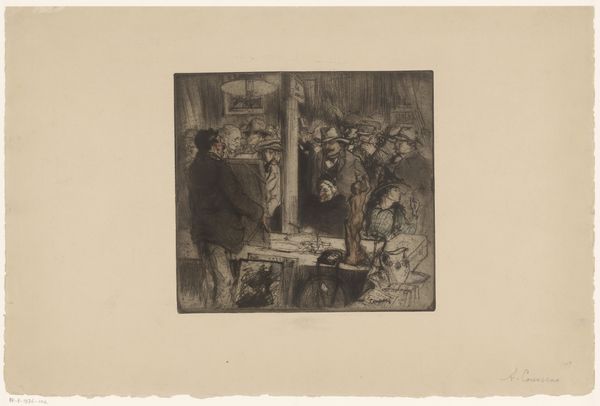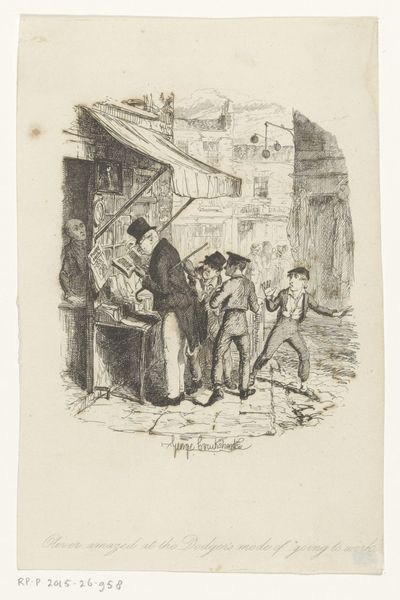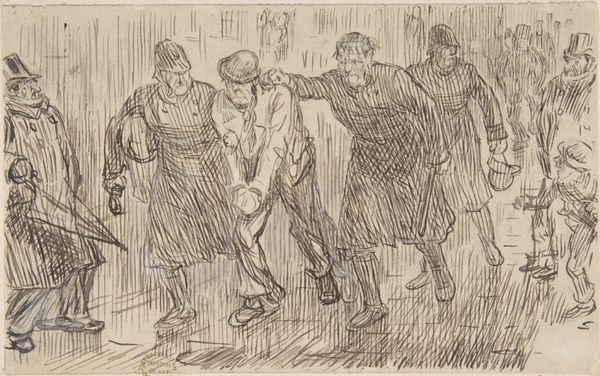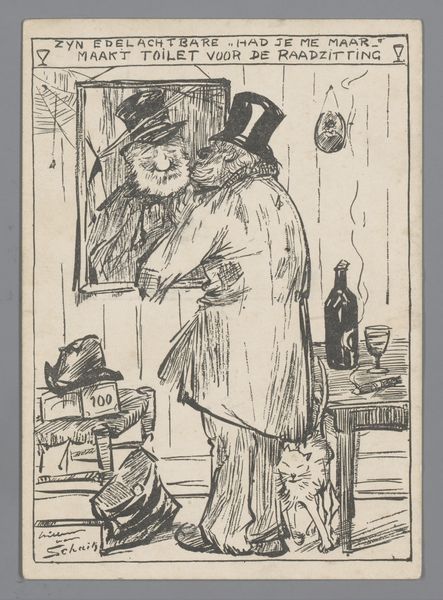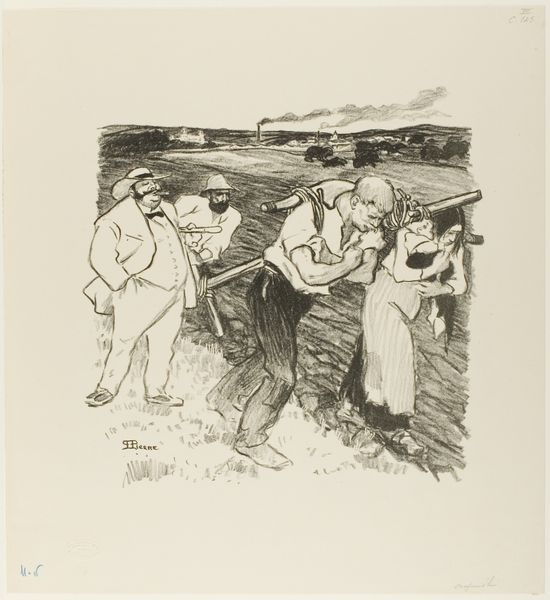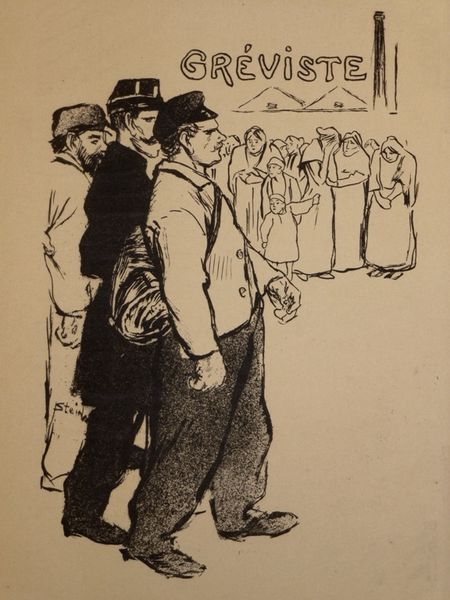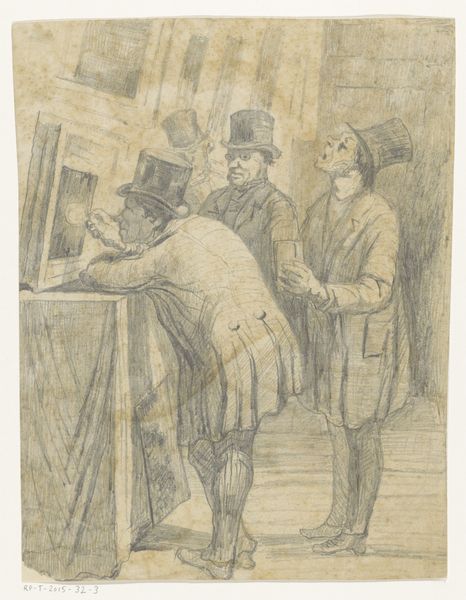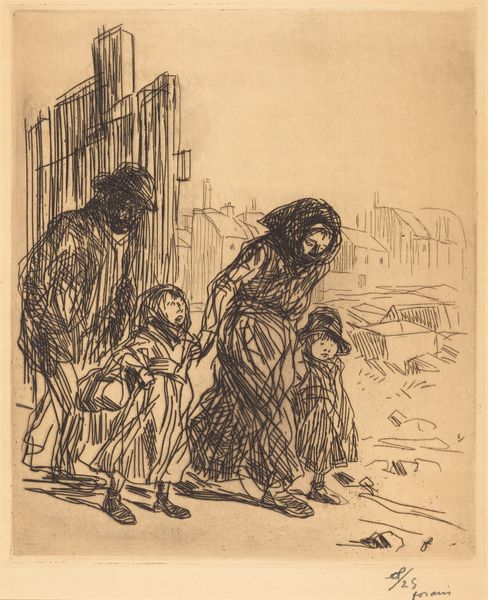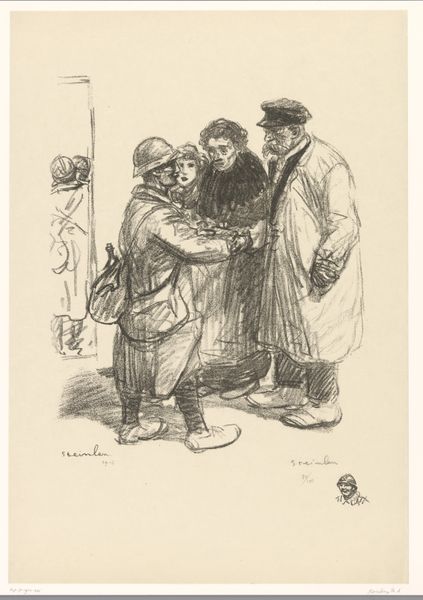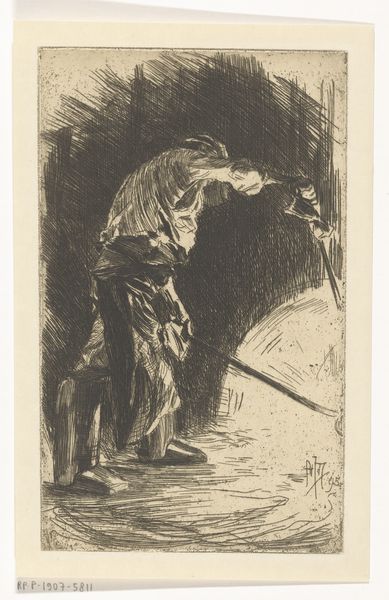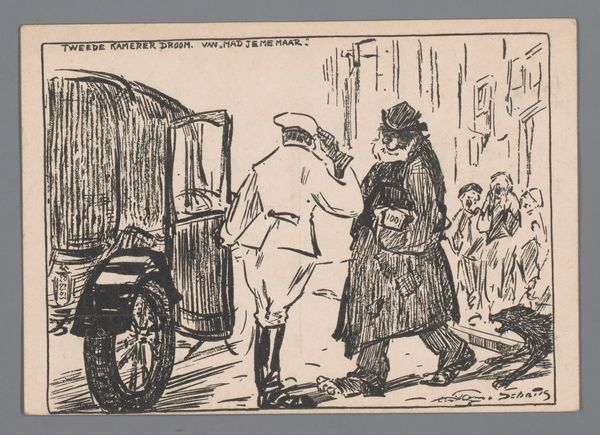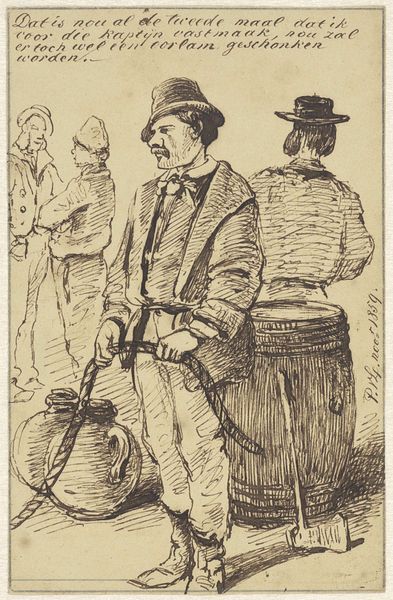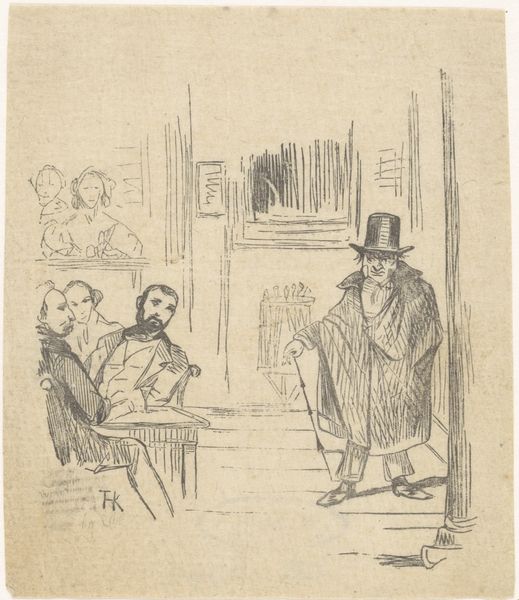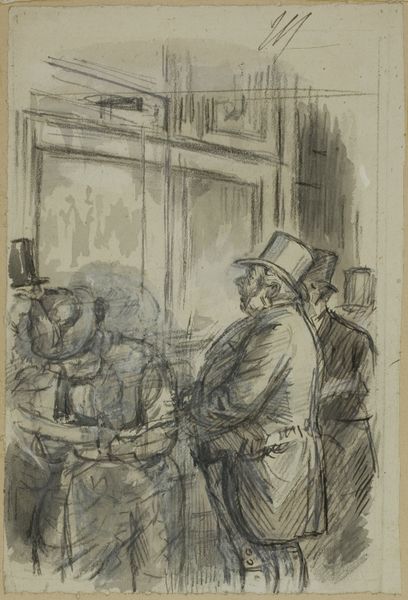
drawing, ink, pen
#
drawing
#
comic strip sketch
#
art-nouveau
#
pen illustration
#
pen sketch
#
cartoon sketch
#
personal sketchbook
#
ink
#
ink drawing experimentation
#
folk-art
#
pen-ink sketch
#
sketchbook drawing
#
pen
#
cityscape
#
genre-painting
#
storyboard and sketchbook work
#
sketchbook art
#
realism
Dimensions: height 260 mm, width 197 mm
Copyright: Rijks Museum: Open Domain
Editor: Here we have Jan de Waardt's drawing "Hoe het volk woont," created between 1896 and 1898 using pen and ink. The stark lines and focus on the figures really give a sense of hardship. What stands out to you when you look at this drawing? Curator: The materiality and the means of production speak volumes. De Waardt's choice of humble materials—pen and ink on paper—highlights the social context he depicts. It mirrors the everyday lives of the working class he portrays. Editor: So, the very materials contribute to the meaning? Curator: Absolutely. The roughness of the lines and the stark contrast created by the ink suggests a certain urgency, perhaps reflecting the harsh realities of poverty and labor. The drawing, itself a product of labor, visualizes labor. It challenges any separation of 'high art' from craft or the lives of everyday people. Consider how mass media at the time was beginning to disseminate imagery; how might De Waardt be engaging in the political discourse surrounding poverty? Editor: That's interesting. I hadn’t considered the relationship between materials, the artist’s labor, and the depiction of the working class. Curator: Also, think about the availability of these materials. Pen and ink were relatively accessible, suggesting a democratic approach to artmaking, possibly intended for a wider audience rather than an elite few. What implications does this have in a museum setting today, where access and consumption also shape its meaning? Editor: I see what you mean. Analyzing the artwork through the lens of materials and production offers a powerful understanding of its social and historical context. It really changes how I interpret the scene. Curator: Indeed. By examining these elements, we move beyond mere representation to understand the complex relationships between art, labor, and society.
Comments
No comments
Be the first to comment and join the conversation on the ultimate creative platform.
